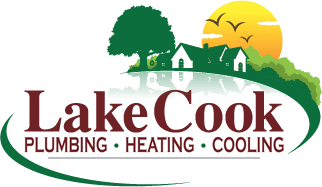Signs Your Garbage Disposal is Broken
- Plumbing

Remember life before your garbage disposal? It makes life so much easier to be able to scrape food off a plate and down the drain. Your garbage disposal gives you peace of mind that you’ll be free of drain clogs, but what happens when it’s broken? Not only does your plumbing instantly become more susceptible to blockages, but the broken disposal itself causes a host of problems on its own. Because it’s so out of sight, it can be hard to determine when exactly your garbage disposal is broken. If you know what you’re looking for, there are a couple of tell tale signs to watch for to let you know when it’s time to call a Lake Cook plumber.
Dead Garbage Disposal
One of the worst sounds to hear when you turn on your disposal is no sound at all. No sound could indicate a simple electrical problem; potentially something as easy to fix as a loose plug or or flipped reset switch. It could also (more troublingly) mean that the motor of the disposal is burnt out. The motor is the most key component in what makes your garbage disposal system operate, so if it’s out of commission, you need to call in for a replacement.
Garbage Disposal Leaking
If your garbage disposal is broken, you may find amounts of leakage. Disposals can leaks from pretty much anywhere: top, side, bottom, into the dishwasher, and down into your plumbing system itself. This is most usually the result of an O-Ring in need of replacement, lost putty sealing around the unit, or improper connections with the dishwasher and drain pipe. All of these are easily fixed with a quick visit from a plumber.
Loud Garbage Disposal
Just like with your car, unexpected grinding noises are the last things you want to hear when you flip on your garbage disposal. Thankfully, unlike your car, this is usually a simple, inexpensive fix that shouldn’t be too much of a headache for you. Normally when your garbage disposal is broken in this way, it’s the result of parts grinding together, which itself is usually caused by something stuck between the blades, a missing component, or is a part has been knocked out of place. While this may seem like an easy enough fix to DIY, we have to recommend using a plumber for the safety factor: the last thing you want is for the disposal to turn on unexpectedly while you’re working on it. A broken garbage disposal will be the least of your problems.
Blocked Garbage Disposal
This is probably the first thing you thought of when you found your garbage disposal was broken: something must be stuck in there stopping it up. While they are incredibly handy pieces of hardware, garbage disposals are prone to being jammed when common food items get stuck between the blades. These include:
- Eggshells
- Shellfish shells
- Celery
- Fruit Seeds and Pits
- Pasta/Rice
- Veggie Peels and Fruit Skins
- Non-food items (cigarette butts, sponges, plant clippings, silverware)
Fats, oils, and greases (FOGs) also have a tendency to stop up your disposal by coating the blades and limiting their effectiveness overtime. Though these shouldn’t be in the drain to begin with, as they are prone to causing major clogs in pipes as they congeal and solidify over time.
Smoking Garbage Disposal
When is a home appliance smoking ever a good sign? We didn’t think so. Smoke emanating from your garbage disposal is a surefire sign of a catastrophic motor failure. Or a circuit panel issue. either way, it’s not good, and you should call a professional immediately to come out and assess the full extent of the issue.
Garbage Disposal Broken? Call Lake Cook Plumbing today!
Check out our stellar Google reviews!







